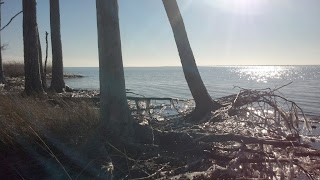Yesterday (28 January), we completed our fourth camping trip near Palmer Station, and bode farewell to a group of elephant seals that were sleeping on some nearby rocks every time we have been out to the area over the past few weeks. After a brief celebration, we began packing and preparing to do more work aboard the Zodiacs. Today we collected seawater samples and information about the structure of the water column in Arthur Harbor. Afternoon temperatures were in the upper 30's, which is warm for this region (its summer time down here!). Because of these warm temperatures and direct sunlight, the nearby glaciers melt quickly and large chunks of ice often fall into the sea. This can cause the surface of the water to be covered in ice despite the warm temperatures. In most cases, this ice doesn't completely restrict our ability to reach a location although it can make getting around take a little longer. While we are busy collecting samples during most of our time out on the water, we do get the opportunity to observe some of the wildlife. Today we saw several crabeater seals taking a break on some of the larger chunks of ice floating around in the harbor. The crabeater and elephant seals in this area seem to enjoy taking long naps, enjoying the sunlight as they drift about. We have pondered the fact that they may fall asleep in one location and wake up hours later in an entirely different area.
Educational Antarctic Tidbit (E.A.T.)
While it may seem like crabeater seals would enjoy a good crab, there aren't any crabs in the Antarctic for them to eat. In fact, over time they have developed specialized teeth that accommodate their primary food source, Antarctic Krill. Crabeater seals primarily compete with humpback and minke whales for food, and are the most abundant type of seal in the world. Not immune to predation, crabeater seal pups are a very important food source for the slightly more aggressive and less comfortable to be around leopard seal.






























